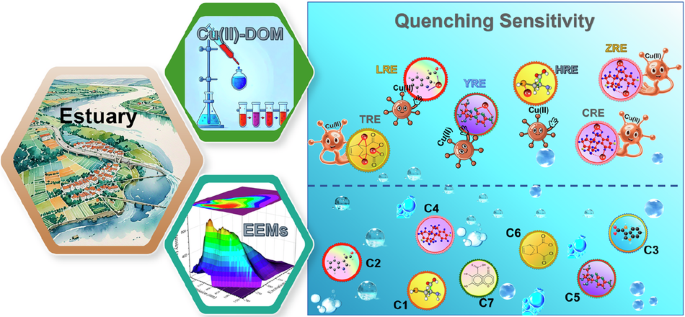Advancing Sustainable Development Goals through Energy-Efficient 5G O-RAN Infrastructure
The expansion of 5G networks presents significant challenges to global sustainability targets, particularly concerning energy consumption and carbon emissions. Projections indicate that without intervention, mobile networks could account for up to 5% of global electricity consumption by 2030, with base stations being the primary contributors. This trajectory conflicts with several United Nations Sustainable Development Goals (SDGs), including SDG 7 (Affordable and Clean Energy), SDG 9 (Industry, Innovation, and Infrastructure), SDG 11 (Sustainable Cities and Communities), and SDG 13 (Climate Action). Addressing the energy inefficiency of network components is therefore critical for aligning technological advancement with sustainable development.
Collaborative Research Initiative for Sustainable Telecommunications
Key Stakeholders and Objectives
A collaborative research effort has been undertaken to address the energy consumption of 5G infrastructure. The primary objective is to investigate and improve the energy efficiency of the O-RAN Radio Unit (O-RU), a component responsible for a substantial portion of network power usage. This initiative directly supports SDG 9 by fostering innovation in critical infrastructure.
- Open Networking Foundation/Aether Project
- Rutgers University WINLAB
- Keysight Technologies
The POET Testbed: A Tool for SDG Alignment
The research utilizes the Platform for O-RAN Energy Efficiency Testing (POET), a specialized testbed designed for precise measurement of energy consumption in O-RU components. By providing accurate and standardized metrics, the POET testbed enables the evaluation and optimization of hardware, a foundational step for achieving SDG 12 (Responsible Consumption and Production) through the promotion of resource and energy efficiency in the telecommunications industry.
Key Findings on O-RU Energy Consumption and SDG Implications
Idle Power Consumption and Inefficiency
A primary finding reveals that O-RUs consume excessive power during idle states, especially in low-power scenarios. This inefficiency represents a significant opportunity for energy reduction, challenging traditional power-saving methods. Addressing this issue is crucial for advancing SDG 7 by minimizing energy waste and promoting more efficient energy use across the digital ecosystem.
Power Amplifier Performance
The report identifies power amplifiers as a dominant source of energy consumption, particularly at high RF levels. Conversely, these amplifiers operate with reduced efficiency at lower levels. This highlights a critical area for technological innovation in hardware design. Improving amplifier efficiency directly contributes to building the resilient and sustainable infrastructure envisioned in SDG 9.
Efficiency Variations and Load Management
The study observed wide variations in energy efficiency among different commercial O-RUs. It also determined that effective load management significantly impacts overall consumption. Notably, MIMO (Multiple-Input Multiple-Output) configurations were found to be energy-efficient when considering the substantial capacity gains achieved for a marginal increase in power. These insights are vital for designing the sustainable network infrastructure required for SDG 11, enabling smart cities to function with a lower environmental footprint.
A Validated Power Model for Predictive Energy Management
A significant outcome of the research is a validated power model that deconstructs O-RU energy consumption into three key components:
- Static Power
- Idle Power
- Dynamic Power
This predictive tool is instrumental for network operators, allowing them to forecast power usage across various scenarios and implement proactive energy-saving strategies. The model serves as a practical instrument for supporting SDG 13 by enabling the telecommunications sector to actively reduce its carbon footprint through optimized operational management.
Future Directions and Strategic Recommendations for a Sustainable Digital Future
Next Steps in Research
The research is set to expand its scope to validate findings under real-world conditions. Future work will involve:
- Testing at the NTIA-funded ORCID Lab with commercial O-DUs and multi-band O-RUs.
- Integrating machine learning algorithms to facilitate real-time energy optimization.
Recommendations for Industry Alignment with SDGs
To ensure the telecommunications industry’s growth is sustainable and aligned with global goals, the following actions are recommended:
- Enhance Hardware Efficiency: Prioritize the development and deployment of O-RU components with lower static and idle power consumption, directly supporting SDG 9 and SDG 12.
- Implement Intelligent Power Management: Utilize advanced software and AI-driven systems to dynamically manage network power states, contributing to the objectives of SDG 7.
- Optimize Load Balancing: Develop sophisticated load balancing strategies to ensure network resources are utilized in the most energy-efficient manner possible, a key requirement for the sustainable infrastructure of SDG 11.
- Standardize Energy Efficiency Metrics: Establish and adopt universal standards for measuring and reporting energy consumption to foster transparency and drive innovation in sustainable technology, in accordance with the principles of SDG 12.
Conclusion: Integrating 5G Growth with Global Sustainability Commitments
The findings from this research provide a critical pathway for mitigating the environmental impact of 5G networks. By focusing on energy-efficient O-RAN architecture, the telecommunications industry can support the data-intensive demands of Industry 4.0 while upholding its commitment to the Sustainable Development Goals. These efforts are essential to ensure that technological progress is both economically viable and environmentally responsible, creating a sustainable digital future for all.
Analysis of Sustainable Development Goals in the Article
1. Which SDGs are addressed or connected to the issues highlighted in the article?
- SDG 7: Affordable and Clean Energy: The article’s central theme is the high power consumption of 5G networks and the urgent need for energy-efficient solutions. This directly relates to ensuring access to affordable, reliable, sustainable, and modern energy.
- SDG 9: Industry, Innovation, and Infrastructure: The text focuses on technological innovation (O-RAN) within the telecommunications industry to build resilient and sustainable infrastructure (5G networks). It discusses upgrading this infrastructure to be more resource-efficient.
- SDG 11: Sustainable Cities and Communities: The research mentioned evaluates network components for different environments, including “medium-power units for urban areas.” Making urban digital infrastructure more energy-efficient contributes to reducing the environmental impact of cities.
- SDG 13: Climate Action: The article explicitly links the high power consumption of 5G networks to “carbon emissions.” Efforts to improve energy efficiency are a direct measure to combat climate change and its impacts.
2. What specific targets under those SDGs can be identified based on the article’s content?
- Target 7.3: By 2030, double the global rate of improvement in energy efficiency. The entire article is dedicated to research on improving the energy efficiency of O-RAN components in 5G networks to reduce overall power consumption.
- Target 9.4: By 2030, upgrade infrastructure and retrofit industries to make them sustainable, with increased resource-use efficiency and greater adoption of clean and environmentally sound technologies and industrial processes. The research on O-RU power models and smarter power management strategies is a direct effort to upgrade telecommunications infrastructure to be more sustainable and energy-efficient.
- Target 11.6: By 2030, reduce the adverse per capita environmental impact of cities, including by paying special attention to air quality and municipal and other waste management. By addressing the energy consumption of base stations, which are prevalent in urban areas, the research contributes to lowering the overall environmental footprint of cities.
- Target 13.2: Integrate climate change measures into national policies, strategies and planning. The article highlights that unchecked mobile network growth could lead to significant global electricity consumption and carbon emissions, framing energy efficiency as a crucial climate change mitigation strategy for the telecommunications industry.
3. Are there any indicators mentioned or implied in the article that can be used to measure progress towards the identified targets?
- Indicator for Target 7.3 & 9.4: The article explicitly mentions the development of “energy efficiency metrics” and the use of the POET testbed for “precise energy consumption measurements.” It also introduces a “validated power model that breaks down O-RU consumption into static, idle, and dynamic power components.” These serve as direct indicators to measure and track energy efficiency improvements in network hardware.
- Indicator for Target 7.3 & 9.4: The article discusses “idle power consumption,” the efficiency of “power amplifiers,” and the energy efficiency of “MIMO configurations.” These are specific technical parameters that can be measured to assess progress in making network components more efficient.
- Indicator for Target 11.6 & 13.2: The article mentions “carbon emissions” as a direct consequence of power consumption. While not quantifying them, it implies that a reduction in power consumption (measured in watts or kWh) would lead to a corresponding reduction in carbon emissions, which is a key indicator for climate action and reducing the environmental impact of urban infrastructure.
4. SDGs, Targets, and Indicators Table
| SDGs | Targets | Indicators |
|---|---|---|
| SDG 7: Affordable and Clean Energy | 7.3: Double the global rate of improvement in energy efficiency. |
|
| SDG 9: Industry, Innovation, and Infrastructure | 9.4: Upgrade infrastructure to make it sustainable and increase resource-use efficiency. |
|
| SDG 11: Sustainable Cities and Communities | 11.6: Reduce the adverse per capita environmental impact of cities. |
|
| SDG 13: Climate Action | 13.2: Integrate climate change measures into policies, strategies and planning. |
|
Source: voip.review






